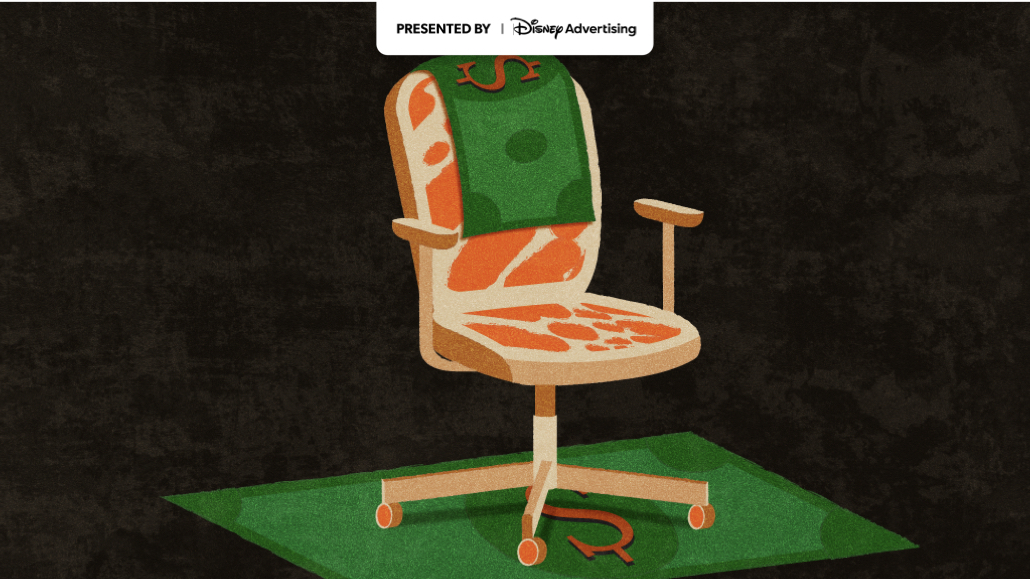How indie agencies will compete with holding companies during the upfront

Agility and flexibility will be key for independent agencies to take on the holding companies as the upfront marketplace plays out over the next several weeks and months — especially as client expectations change as a result of a far more complex market.
When it comes to securing their portion of the $20 billion or so of advertising spend from marketers, per eMarketer estimates, independents have to employ creative strategies to ensure they can still get clients access to optimal inventory. That’s no easy task when holding companies come armed with hundreds of millions in spending power on behalf of those marketers.
At Media Culture, for instance, responding quickly to market changes and customer expectations “[gives] clients a degree of responsiveness that bigger holding corporations may struggle to match,” said Christena Garduno, Media Culture’s CEO.
For others, it comes down to focusing on their specialties in the market, whether that be finding a sweet spot in pricing and inventory or working more closely with the networks’ and streamers’ sales teams. Here’s a look at how independents are adapting their current strategies — and why they say the upfront as a marketplace means less to their clients these days.
Flexibility in a changing marketplace: CTV and digital
Juliet Corsinita, head of convergent video and audio at PMG, explained that the upfront marketplace isn’t as important to the independent’s clients now given an “ever-changing media ecosystem” — one in which the sell side often doesn’t have full visibility into the next several months. Currently, PMG said its investments are roughly 50% linear, 30% connected TV and 20% YouTube/social video.
Some exceptions might be live sports or events that have limited supply with a strong demand, like the 18 weeks of the regular NFL season, Corsinita added. Of course, those are among the hardest ad avails to buy given the demand.
“Therefore, it’s best not to lock in spending and instead keep current with opportunities that emerge monthly,” Corsinita said — in other words, keep a closer eye on the scatter market.
“An increased focus on outcomes over currency has proven the value of inventory transacted outside of upfronts,” added Doug Paladino, CTV and programmatic lead at PMG.
“Goldilocks” model
When it comes to getting the right fit and pricing, Novus tries to stay nimble even though the agency is not “currently a big player in the upfront,” said Rob Davis, president and CMO at Novus.
Garduno similarly said the “reasonable pricing compared to holding corporations” can be a draw to clients, since they have fewer administrative costs and streamlined procedures as an independent.
Davis added that the agency’s “Goldilocks size” can be a pricing advantage for clients — by being big enough to “have clout, but not so big that sellers are reluctant to tie up too much inventory at really low prices.” Novus is also leveraging unique data to find programming that may not always be the top-rated, but may offer a better fit for clients’ requirements.
“For example, we look at shows that happen to over-index ratings in the geographic areas around the locations of a brick-and-mortar retailer,” Davis said. “This enables us to secure lower CPMs while delivering impressions where our clients need them most.”
Some of this can still be done in linear, but CTV offers more “robust targeting layers,” Davis said. So the spending decisions vary client by client based on their goals — and is another reason that the agency said overall it is moving more spending toward CTV and digital video.
Developing a speciality and skillset
In particular, Garduno emphasized having a specialty as an independent agency like Media Culture, which focuses on brand-response marketing in campaigns. It’s how the agency is able to develop domain expertise and offer “unconventional thinking” to set itself apart from its larger competitors, Garduno said.
Corsinita mentioned that PMG teams have deep relationships with the sales side in order to determine what is or isn’t working for different clients. This helps them set priorities together if news breaks and various opportunities arise.
Mike Treon, head of CTV strategy for PMG, also said aligning programmer data and measurement in shorter cycles allows them to react quicker, making it easier for optimizing supply paths and getting the lowest CPMs.
“We buy across all aspects of the publisher landscape in tag-based, audience-driven and programmatically informed buying tactics,” Treon said.
Being flexible with the negotiating process with media sellers is also really important on the CTV side, Treon added. Negotiating deals that allow more fluidity, because these don’t require advertisers to buy for the full year upfront, allows companies to allocate budgets based on platforms and performance. In linear TV, they still mostly rely on scatter.
Both Exverus Media and Crossmedia declined to comment, citing that their clients are not big players in the upfront marketplace. An Exverus representative explained that the agency’s clients instead look for the flexibility the scatter market offers in order to adjust media plans based on performance throughout the year.
More in Media Buying

Ad Tech Briefing: Big Tech won 2025 (even when it lost)
How AI, commerce media and scale reshaped ad tech in 2025 to the benefit of Big Tech.

How brands shifted marketing and media strategies through year of tariffs
Marketers share how they navigated the maze of tariffs and regulatory changes this year.

Media Buying Briefing: Omnicom Media execs begin their pitch outreach ahead of an expected new-business glut
Omnicom’s acquisition of IPG is only a few weeks old, but its combined offer to the market will soon be put to the test as it meets with consultants.








